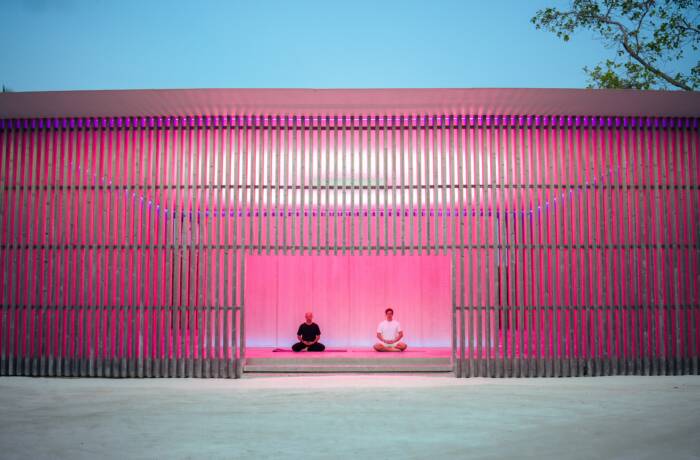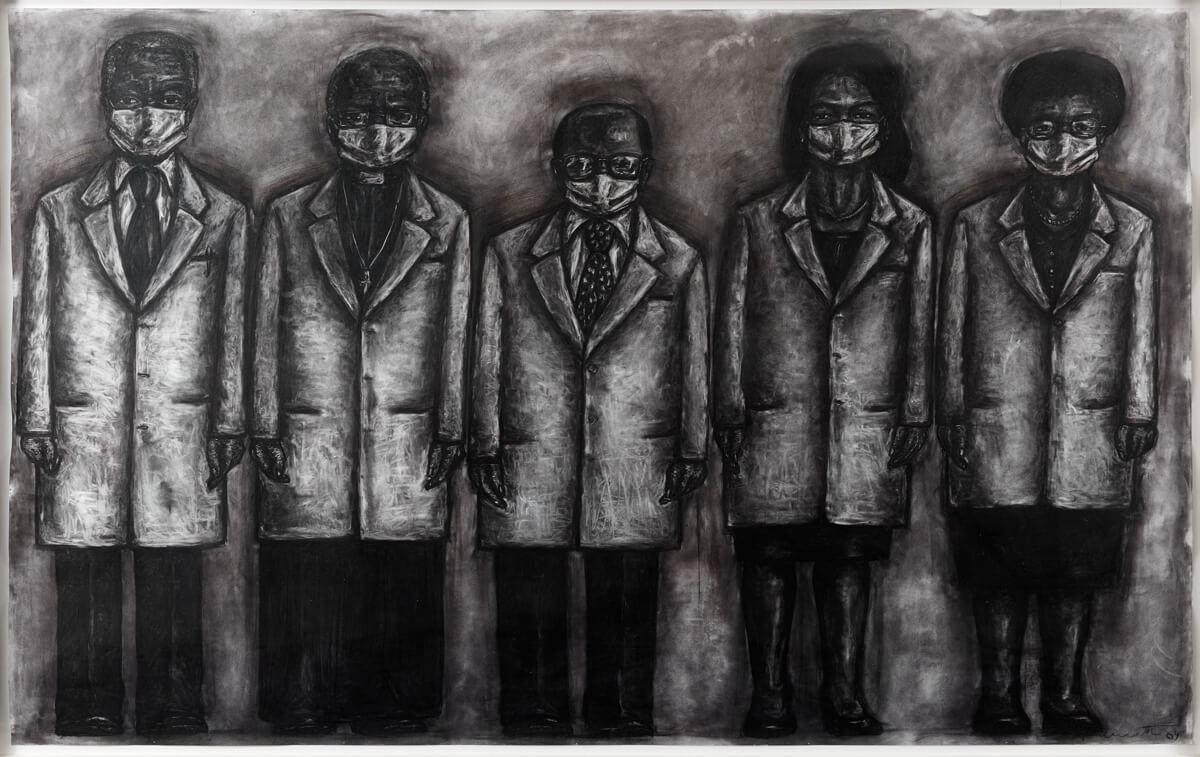
Peterson Kamwathi, Medical Establishment-from the Sitting Allowance series, 2009, Courtesy of The Heong Gallery
Robert Devereux, former partner of the Virgin empire, served as chairman of the board of Frieze, the Tate Africa Acquisitions Committee and as an advisor to 1:54 Contemporary African Art Fair. Kitty Harris caught up with the African contemporary art collector at The Heong Gallery at Downing College Cambridge for the exhibition of his Sina Jina collection: ‘Where the Heavens Meet the Earth’ to discuss the evolution of the art world, the importance of museums and his long African walk.
Kitty Harris: After completing your degree in History at Cambridge University you went into to publishing and then to work for your then to be future brother in law, Richard Branson. How did this journey lead you to the arts?
Robert Devereux: I got into the arts primarily because of my family. My mother, who particularly loved literature and my dad who had a great love of the visual arts and artefacts. We spent a lot of our summer holidays in Italy which involved going to museums and art galleries. Every year for my mother’s birthday and Christmas present, from the age at which I had pocket money, I brought a reproduction of a Tallantyre piece from Morpeth where we lived. She loved Bruegel’s work so our house was full of them; sadly, none of them were originals.
KH: And why did you start buying art?
RD: It’s so long ago now, I’m not sure if I can remember the answer. I started buying in the late 70s and early 80s when my wife had an art gallery. I don’t suppose I would have become a collector if I hadn’t started in order to support the gallery, maybe not. I started because Vanessa [Branson] had a gallery in Notting Hill. Interestingly, she had three or four African artists in her stable which was highly unusual and completely coincidental, because that was before my engagement in Africa.
Follow LUX on Instagram: the.official.lux.magazine
KH: What draws you to the art you do buy?
RD: Like all creative endeavours, an emotional response. Be it excitement, intrigue, interest. I wouldn’t buy a piece if it didn’t move the hairs on the back of my neck – not an intellectual approach I know, but then I begin to try to understand the works. I am fascinated by the thought process – why? Does it mean anything? And if so, is it purely pictorial, sculptural or is there some other significance?
KH: You’ve expressed an aversion to being called a “collector”, preferring the term buyer…
RD: A supporter. Often people say a Patron, I suppose there is nothing wrong with being a Patron but it does also have the connotation of patronage. I would like to think that both my collecting and my creation of the The African Arts Trust are for the support of the artists.
KH: How do you think the purchasing of art has changed since you began in the 70s and 80s?
RD: It’s changed out of all recognition. I was collecting mainly British art then and buying from London galleries, mainly Vanessa’s. The number of collectors, certainly of contemporary art, you could count on the fingers of one had. There were practically none of us. And now, it’s a huge industry and there are hundreds of collectors. There’s been an extraordinary snow balling effect. The creation of the Tate Modern, which has nothing to do with collectors, but it’s interesting that contemporary art has become a huge contemporary cultural phenomenon. The Tate Modern is one of the most visited institutions in the world and that’s amazing given what its content is.
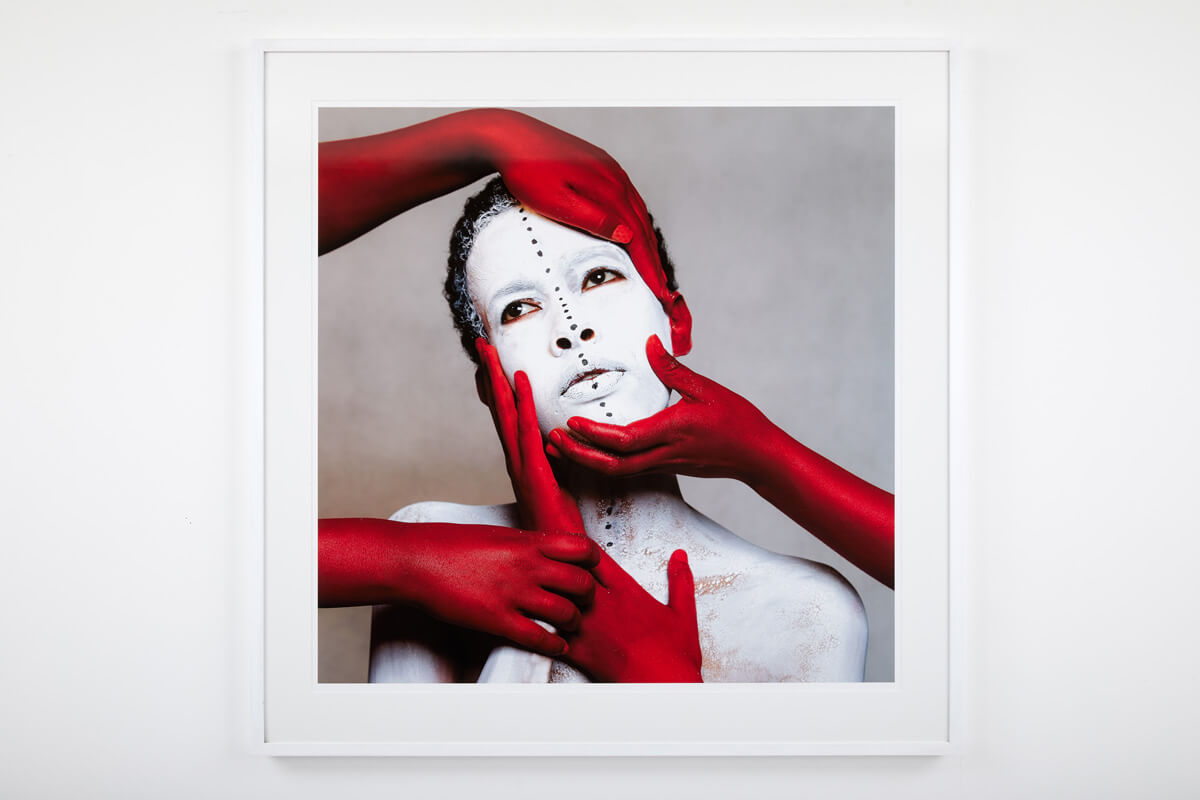
Aida Muluneh, No. 7 from the 99 series, 2013. Courtesy of The Heong Gallery
KH: Museums seem to have become the attraction of cities…
RD: Yes. Take the Guggenheim in Bilbao, Spain. Now everybody knows that if you want to create social and economic regeneration you do it with an arts project, which is great. I had an interesting conversation with some older artists the other day who said, “When we left art school the thought of being a full time practising artist and earning our living from it never occurred to us. We went to teach or went to work in a museum.” And whilst they would have said it is definitely better now, there is something missing from that period when artists never had to think about selling work, or creating art for gallery deadlines or commercialising. Which is not to say that I think all artists do commercialise because I think most don’t. I think the commercial marketplace does have an effect on the art produced.
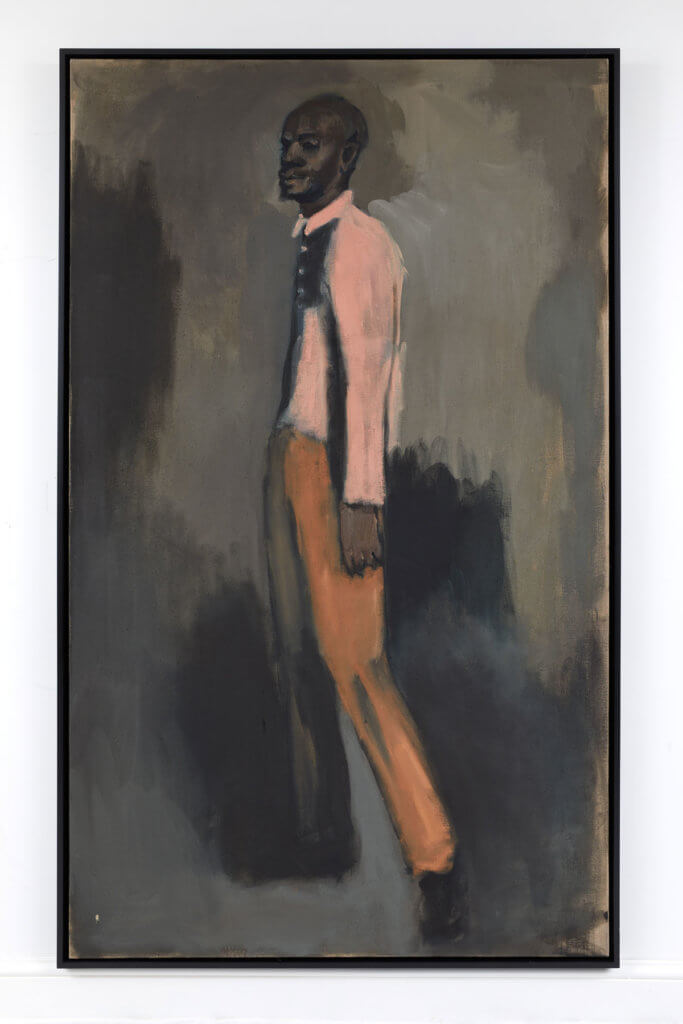
Lynette Yiadom Boakye, High Power, 2008, Courtesy of The Heong Gallery
KH: Do you think that the role of ultra-high net worth’s in purchasing art has changed the art world? Do you think there is a disconnect between creators and consumers? Or that perhaps artists create for consumers?
RD: I think we live in a very mixed ecology. I think all of the above. It happens in places where there is no real art market where an artist finds that they do something and the local tourists buy it and so they continue to do that because they know it will sell. And then there are artists who completely ignore that phenomena. One thing I find unattractive is art as a fashion and there is a strong element of that in the art market. Of art having become just a display of wealth, a sign of good taste (whatever that means) and a status symbol. I’m not going to name names but suddenly artists take off and it’s very clever artist manipulation by galleries and a few collectors.
KH: You served as Chairman of the board of Frieze, what do you think of the term ‘Fair Fatigue’ and what future do you see for art fairs?
RD: I think they will remain undoubtedly. I don’t say this to support Matthew Slotover and Amanda Sharp [the founders of Frieze]. There are as many art fairs as there are because they serve a valuable purpose. Are there too many of them? Maybe there are, maybe there aren’t. I think there will be ups and downs and peaks and troughs. I don’t have any doubt that art fairs will be a critical part of the future of the art world. They are wonderful and dreadful at the same time.
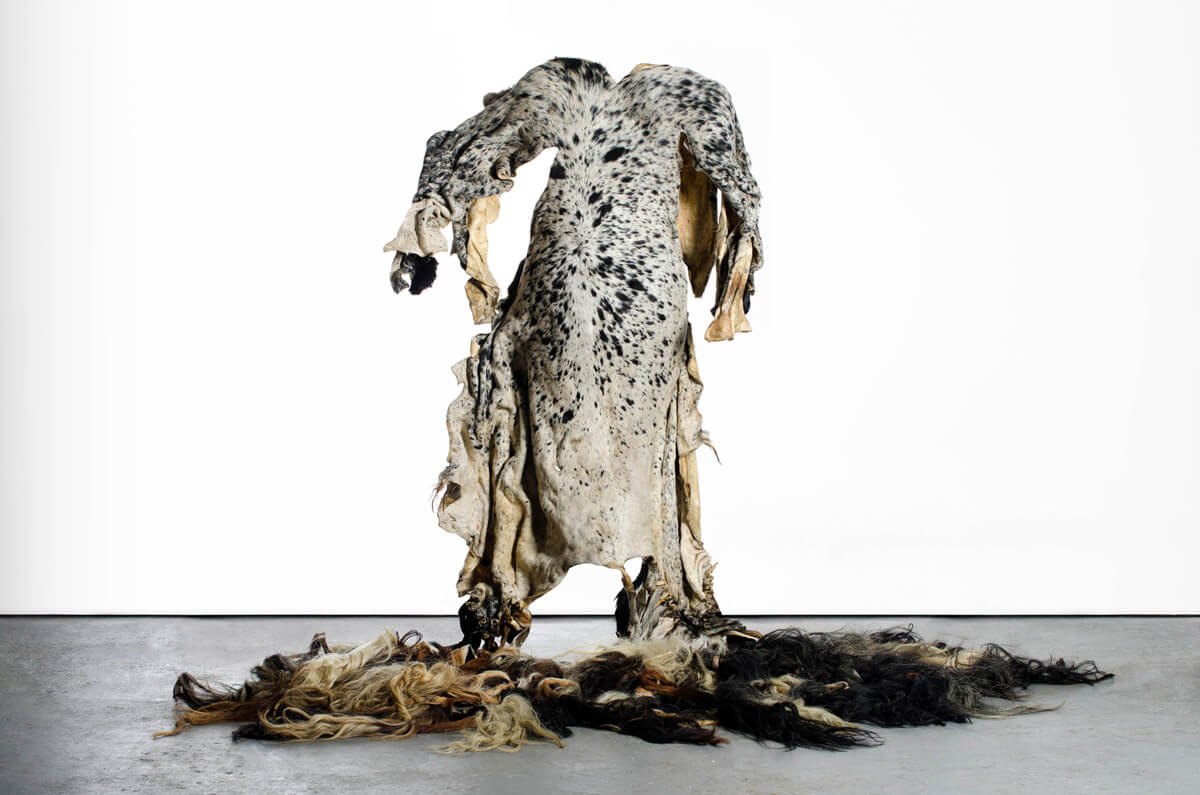
Nandipha Mntambo, Enchantment, 2012, Courtesy of The Heong Gallery
KH: You sold your 416 works of post-war British art in 2010 with Sotheby’s to start The African Art Trust. Was it hard to part with those works?
RD: I should probably say it was. Not at the time, it actually wasn’t. Partly because I got to the point where I needed to do something and inevitably as any collector does, you end up with work in storage which I think is most unfortunate. I had come up with the notion of The African Art Trust and the only way I could afford to fund it was to sell the works. I think that made it relatively simply because I think I felt I was doing it with clear and worthwhile purpose. Now, six years later, there are probably parts of that collection that I miss more now than I did then. I don’t really miss them. I miss them in the sense that I still think about them and they are in my imagination. That’s great because in a way I haven’t lost them.
Read next: The rebirth of Annabel’s, London’s most glamorous club
KH: The funds went to establish The African Arts Trust, a body that continues to fund grass roots organisations in expanding opportunities for artist. Why Africa? And what was your priority with this organisation?
RD: Africa because I had spent a lot of time there and I had been collecting African art for seven or eight years. I suppose I felt with a relatively modest sum of money, it was possible to make, hopefully, an impact there. Whereas if I’d have spent that amount of money in the UK it would have been a drop in the ocean. Also, I think the need there is much greater, which is not to pretend it’s not tough being an artist wherever you are; even in an extremely bright developed economy like ours. I do support The Showroom here, but in a much more modest way. I recognised there were lots of wonderful artists there who could do with a leg up, or some help or some support or some recognition.
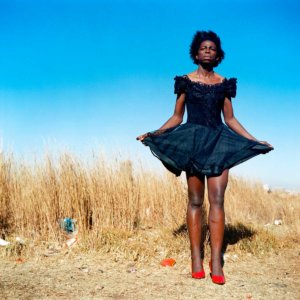
Zanele Muholi, Miss D’vine II, 2007, Courtesy of The Heong Gallery
Kitty Harris: Tell us more about your Sina Jina Collection?
Robert Devereux: I’ve got a house in Lamu, an amazing Muslim community on the North coast of Kenya. And the house which I brought years and years ago, unusually had no name because it’s very old house and all of the houses in Lamu have a name bestowed upon by the families that own them. So I called the house ‘Sina Jina’ which means the house with no name. The collection never had a name until quite recently and for reasons that I can’t really remember I thought it better have a name. I prefer not to use my name if I possibly can. I called it ‘Sina Jina’ and there are probably 400 works; I’m not sure how many there are.
‘Where the Heavens Meet the Earth’ was a lovely title for the recent exhibition at The Heong Gallery, Downing College Cambridge and there is a certain spirituality of wonderful art – the earthly nature of the pieces connects them. The use of recycled materials: paper and wood. They are dis-proportionally from Eastern and Southern Africa because that’s where I spend most of my time, but there is lots of Western African art in there too; it’s all sub-Saharan. It doesn’t lose significance coming to London, it may change the context or meaning or just have a different significance. It’s medium agnostic. Photography is something I didn’t really collect when I was collecting British art, which is partly because I don’t think I’ve got a very good eye for photography. But there is quite a lot of photography in the collection, which I think partly reflects that there is a very strong practice of it in those countries.
KH: You’re not a gallery, how do you coordinate an international art collection?
RD: I don’t really! There’s not a plan. I do it myself. My girlfriend happens to be my art assistant as well. She does the archiving and tracks things as they move around the country. I haven’t got a curator and I think to me that would be a slightly weird thing to do, For me, the main enjoyment and what I get most out of it personally is exploring the artist’s world, meeting with them and engaging with them. I understand if you have big ambitions as a collector why you would have to do that. I would rather it subject to a random degree of subjectivity and was kept very personally.
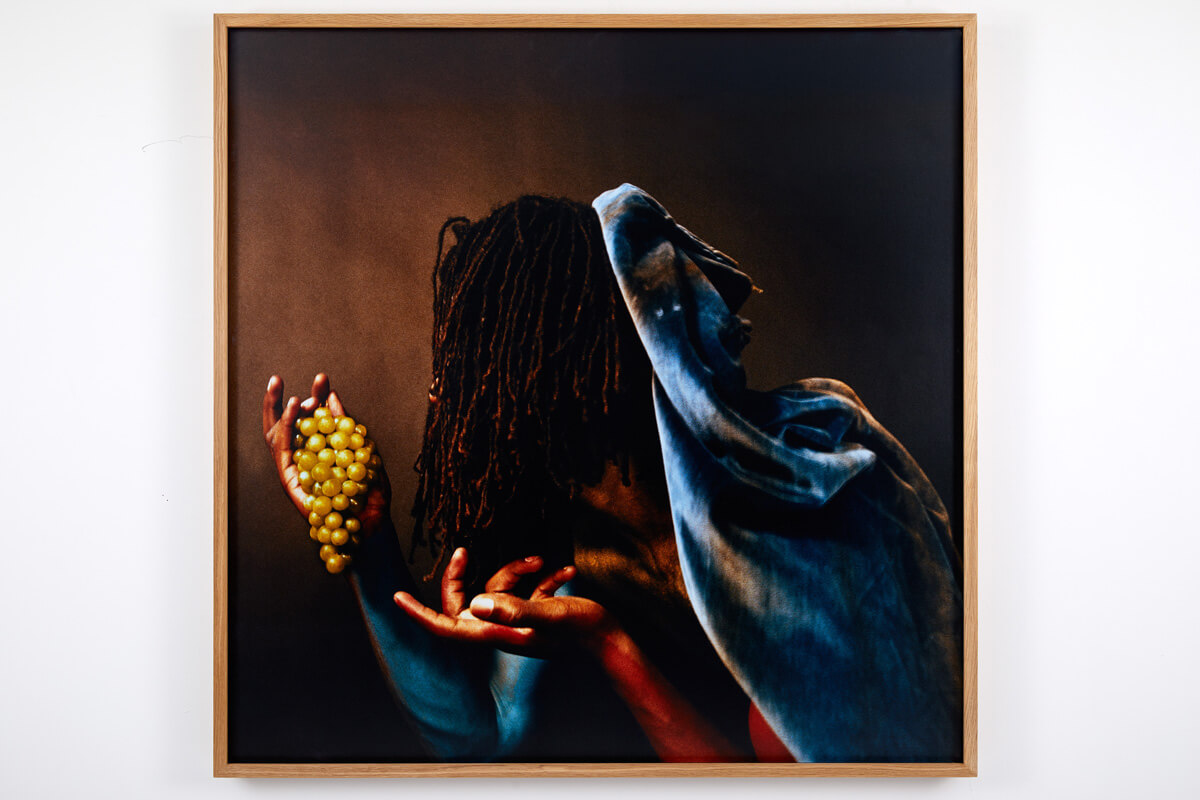
Rotimi Fani Kayode, Grapes, 1989, Courtesy of ABP and The Heong Gallery
KH: What’s next for you?
RD: I went for a long African walk at the end of 2015/16. I walked the length of the African Rift Valley. I spent six and half months walking and the reason I mention it is that one of the reasons I did it was to clear my decks. So that I could come back and think about the last twenty years of my life (which are probably the last twenty active years of my life) and decide what I wanted to do. Before I went away I stopped collecting about six months before I left and haven’t really started again. I’ve bought one or two things. One of the things the walk made me think about, which I think about continuously anyway, is what am I doing as a collector? I’ve got a relatively small resource and how is it best used and applied? Is the best way of spending what I have got to collect? Or should I use that money in different ways? Anything I buy now goes straight into storage, which is ridiculous. I’ve got to the point in my life, I’m an old man, where I ‘m beginning to think where is it going to go eventually? In an ideal world, I would love to gift it to an institution, ideally to an African one. It would be wonderful if it could go back to Africa, but there’s nowhere obvious that I know of where it could go to. Then of course my children, in many way it’s as much theirs as it is mine. Quite what they would wish to do with I’m not sure. I’m trying not to start buying again until I’ve solved some of those issues.
KH: Which piece of art would you save in a fire?
RD: There’s always two ways of asking that question which is either: which is your favourite piece? Of which I don’t have one. Or to do what you did, which my cunning son asked. My answer: the one nearest to me. I really don’t have a favourite. I’m now trying to imagine myself in the fire and running out and it would be whatever I could realistically get out.



